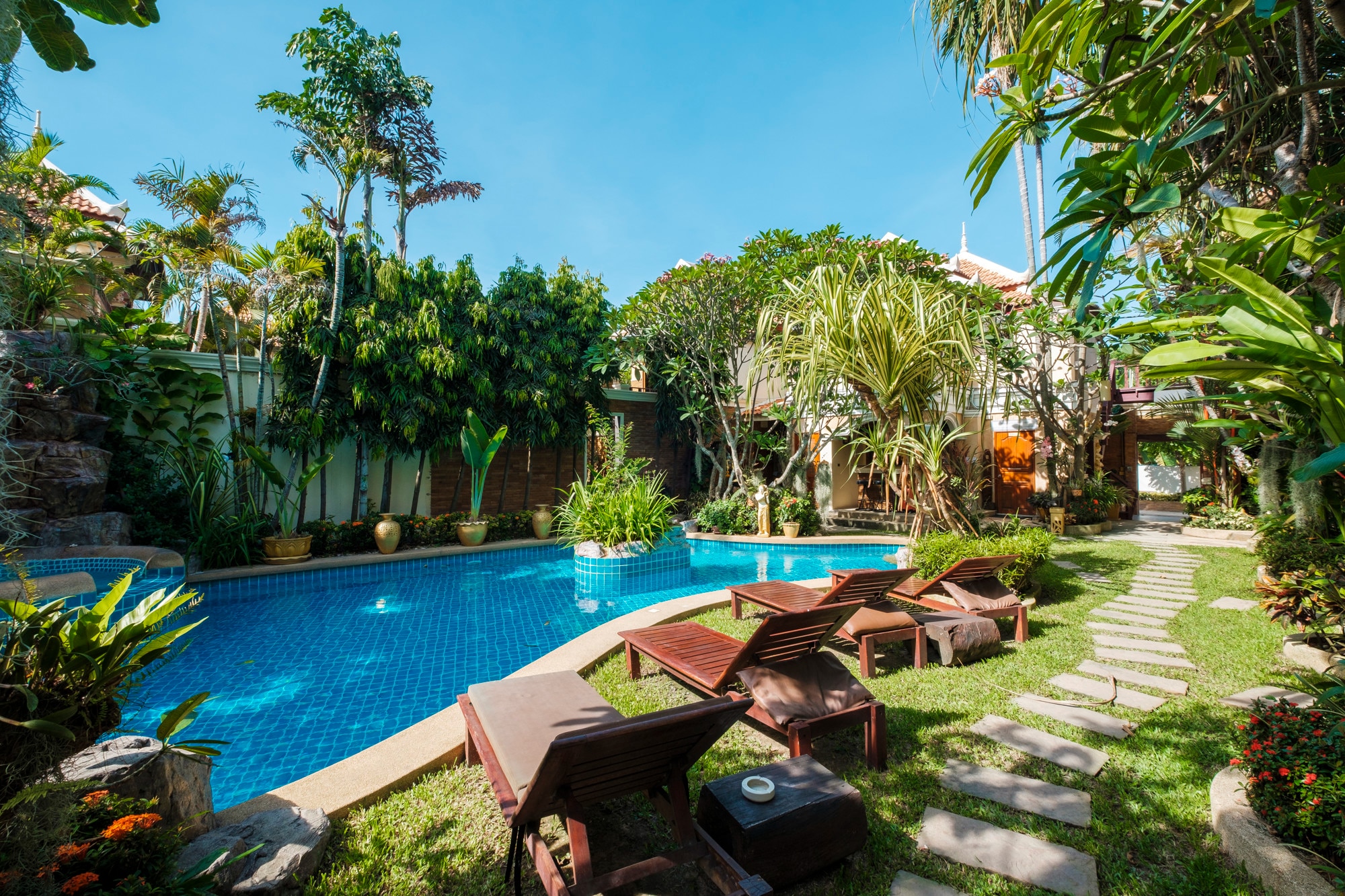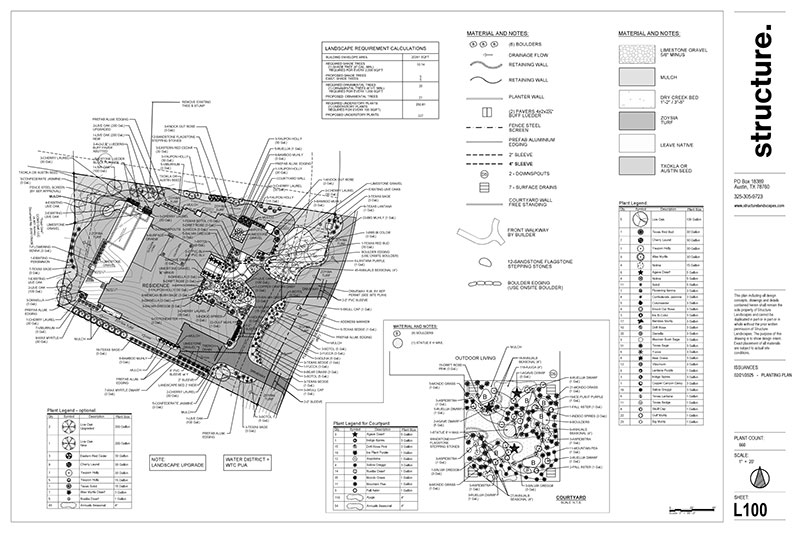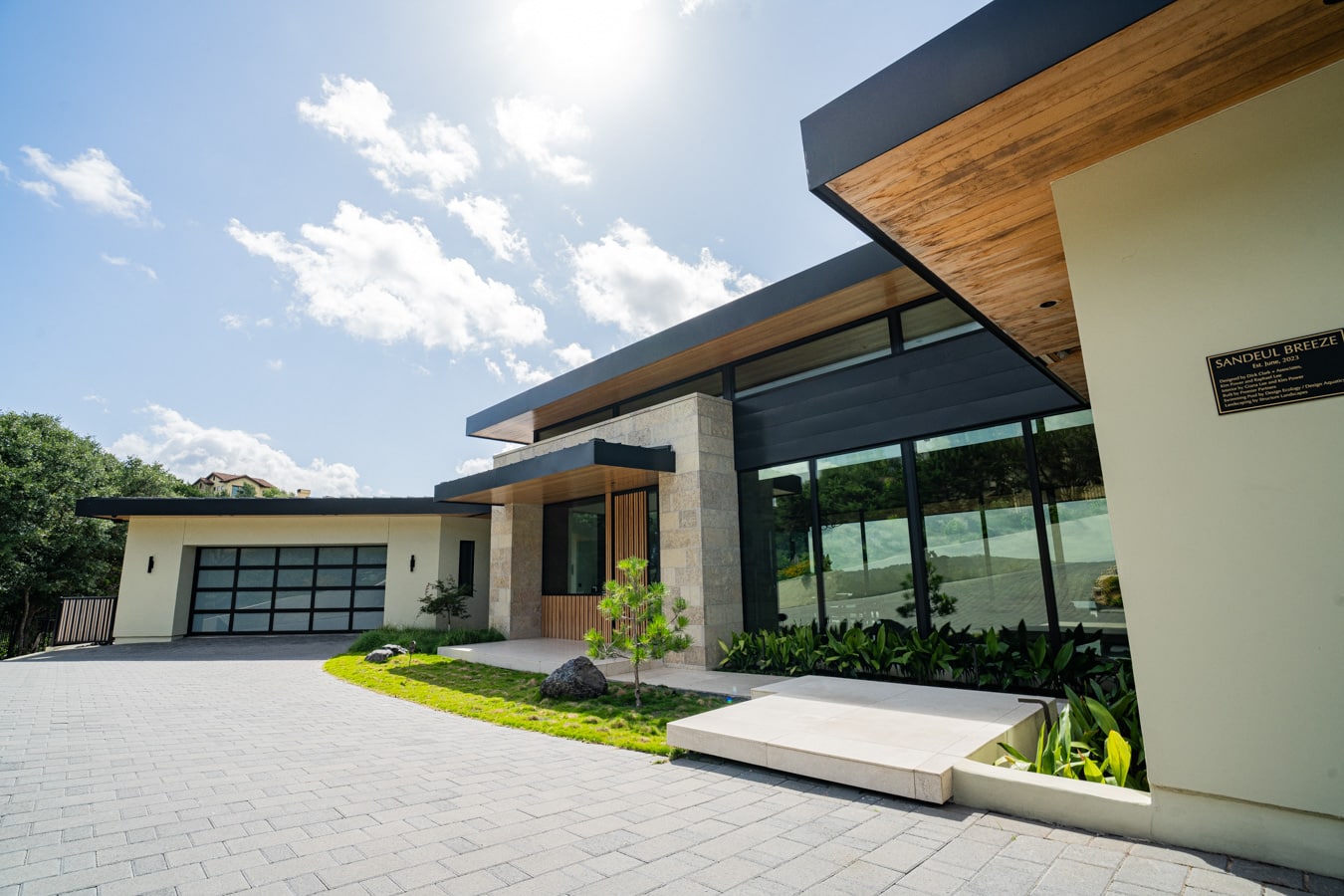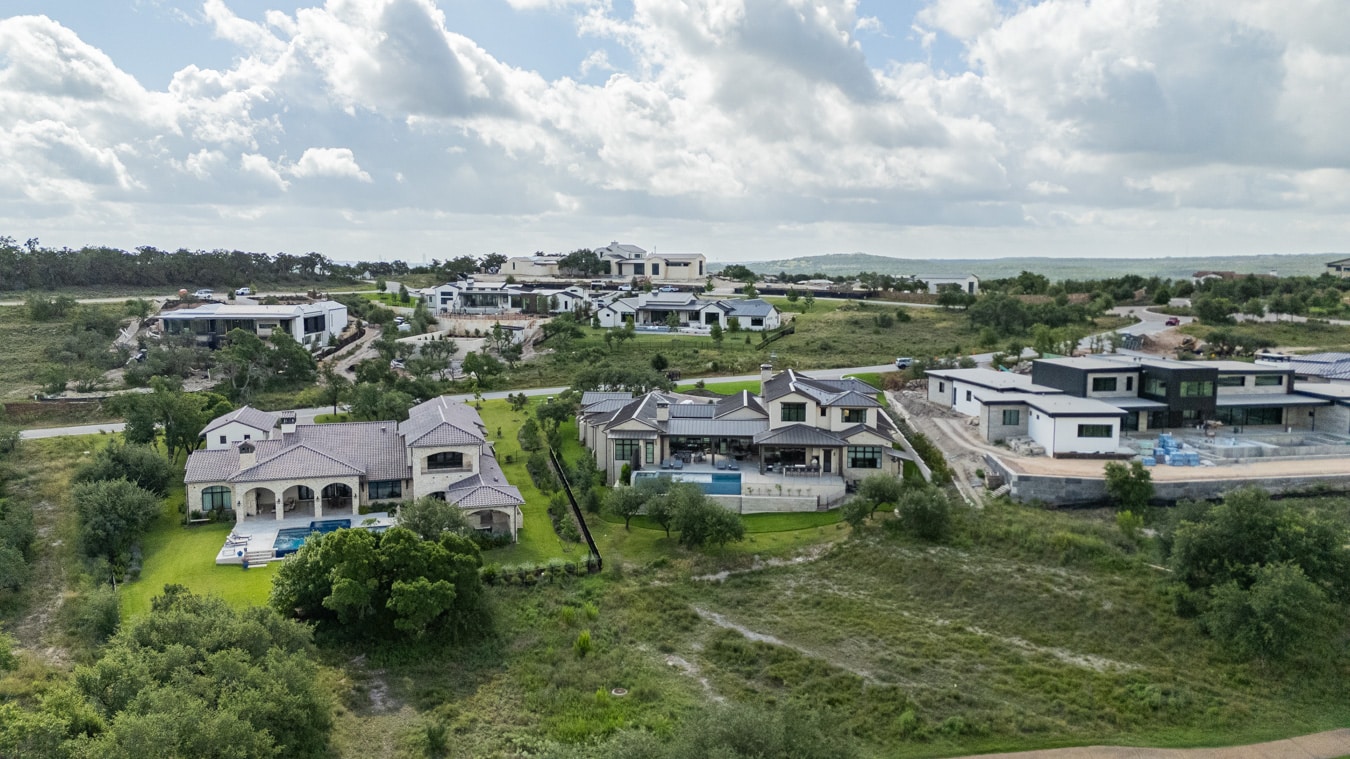Landscape design is the art of arranging land and elements to create beautiful outdoor spaces. It involves understanding how to blend natural features, plants, and structures to enhance the environment. Good landscape design can transform a dull yard into a vibrant and inviting area.
By considering factors like climate, soil type, and the specific needs of your space, you can create a landscape that not only looks great but also functions well for your lifestyle. It can include various elements such as gardens, walkways, patios, and water features.
Whether you want a peaceful retreat or an active entertaining space, our landscape architects at Structure Landscapes can design a landscape that aligns with your vision.
Fundamentals of Landscape Design
Landscape design combines art and science to create attractive outdoor spaces. Understanding the key principles and elements will help you make effective and pleasing designs.
Understanding Design Principles
Design principles guide how elements come together in landscape design. Key principles include balance, scale, and focal points. Balance ensures that a space feels stable, whether symmetrical or asymmetrical.
Scale refers to the size of elements in relation to each other and the environment. Having items that fit well in the space creates a pleasing look. Focal points draw the eye and add interest. They can be a sculpture, a tree, or a garden bed.
Using these principles helps achieve harmony in your designs.
Elements of Landscape Design
Elements of landscape design are the building blocks of outdoor spaces. Important elements include form, line, and color. Form refers to the shape of plants and structures. It affects how the landscape feels. Lines guide the viewer’s eye and create pathways, making the space inviting.
Color adds emotion and energy. You can use bold colors to create excitement or soft colors for calmness.
Texture adds depth, making areas feel more interesting. Combining different elements thoughtfully can enhance the visual appeal and functionality of your space.
Analyzing Outdoor Space
Analyzing your outdoor space is crucial for effective landscape design. Start by examining the topography and existing features. Consider slope, drainage, and sunlight as these affect plant growth and placement.
Next, look at how you will use the space. Identify areas for relaxing, playing, or gardening. This will help determine the design layout.
Assessing the curb appeal is also important. This affects first impressions for guests and passersby. A well-thought-out design can transform any outdoor space into an inviting and functional area.
Landscape Design Implementation
Implementing landscape design is crucial for turning ideas into reality. This process involves creating a master plan, constructing garden and hardscape elements, and selecting plants and features that will thrive in your space.
Creating a Master Plan
A master plan is the blueprint for your landscape. It outlines the layout and design of the entire area, including planting beds, hardscape paths, and water features. Use a scale drawing to represent all elements clearly.
Consider your hardiness zone to choose plants that will thrive. This plan should also include areas for transition, which help to create flow between different spaces. Think about repetition in plant groupings for a cohesive and inviting look.
Garden and Hardscape Construction
Starting the construction phase means bringing your master plan to life. This involves setting up the hardscape elements, such as patios, walkways, and walls. Use durable materials that align with your design vision.
Pay attention to drainage and irrigation systems to ensure proper water flow. Installing these features at this stage is crucial for plant health later on. Incorporate water features like ponds or fountains for added aesthetic appeal.
Selecting Plants and Features
Selecting the right plants is essential for a vibrant landscape. Choose a mix of perennials and annuals to provide year-round interest. Group plants based on their water needs and sunlight exposure.
Incorporate features such as benches or sculptures to enhance the space. It’s important to choose plants suited to your hardiness zone to ensure they thrive. Consider their mature size and growth habits to avoid overcrowding in planting beds.
Landscape Styles and Personalization
Choosing the right landscape style for your outdoor space can greatly enhance its appeal and functionality. Personalizing your design to fit your needs makes the space uniquely yours.
Exploring Landscape Design Styles
There are many landscape design styles to consider. Each style offers a different feel and function.
- English Garden
This style emphasizes natural beauty. It features soft, flowing lines and plants that create an informal look. You might include colorful flowers, winding paths, and cozy seating areas. - Modern Landscape
A clean, minimalist approach defines modern design. It often uses structured layouts with geometric shapes. You can incorporate materials like concrete and metal, along with simple plant choices. - Traditional Garden
This style uses symmetry and formal layouts. Classic elements like hedges, fountains, and walkways are common. You might find a central focal point that draws the eye.
Enhancing Personal and Functional Use
Your landscape should reflect your personal style while meeting your needs. Think about how you will use the space.
- Outdoor Living
Consider areas for relaxing and entertaining. You might add a fire pit or an outdoor dining area to enjoy meals outside. - Seating Areas
Create comfortable seating with benches or chairs. This makes your yard inviting for friends and family. - Adaptability
Design for various activities. You can have open spaces for games or quiet corners for reading.
Ready to transform your outdoor space? Contact Structure Landscapes today for a design meeting, and let us bring your vision to life!





